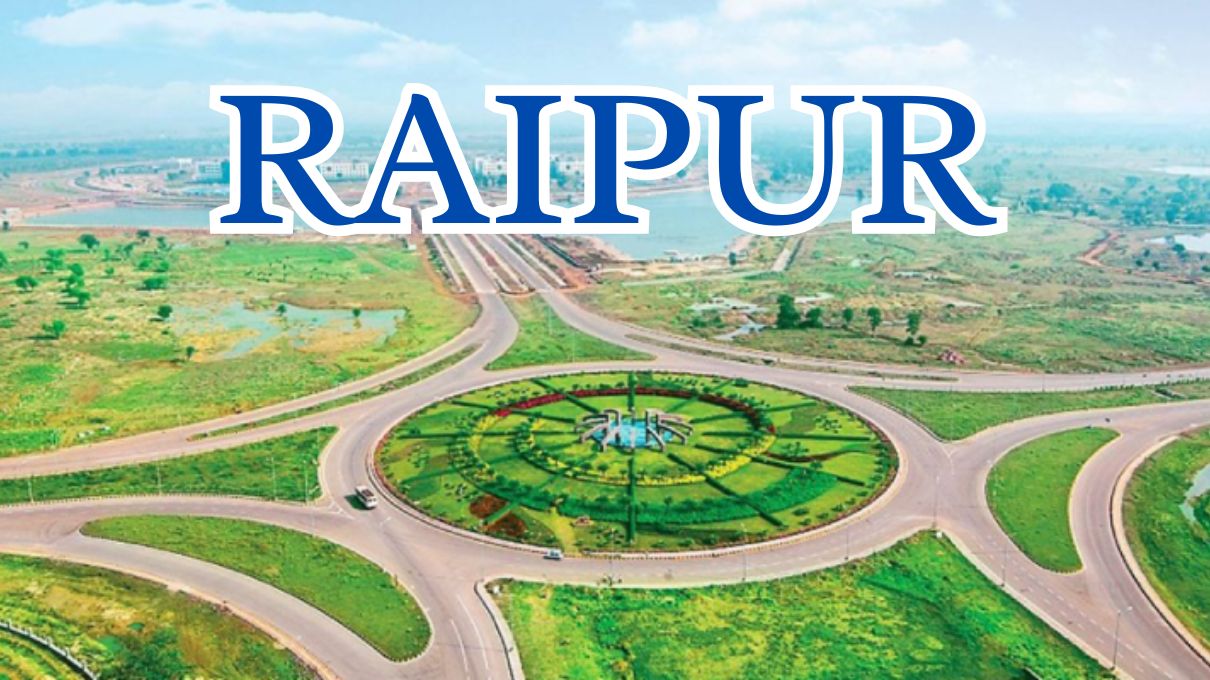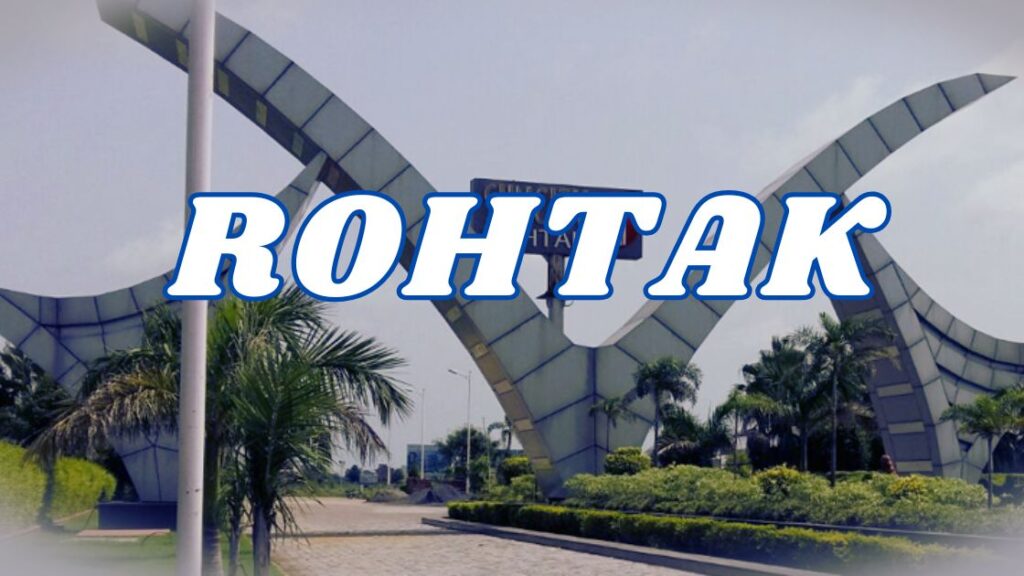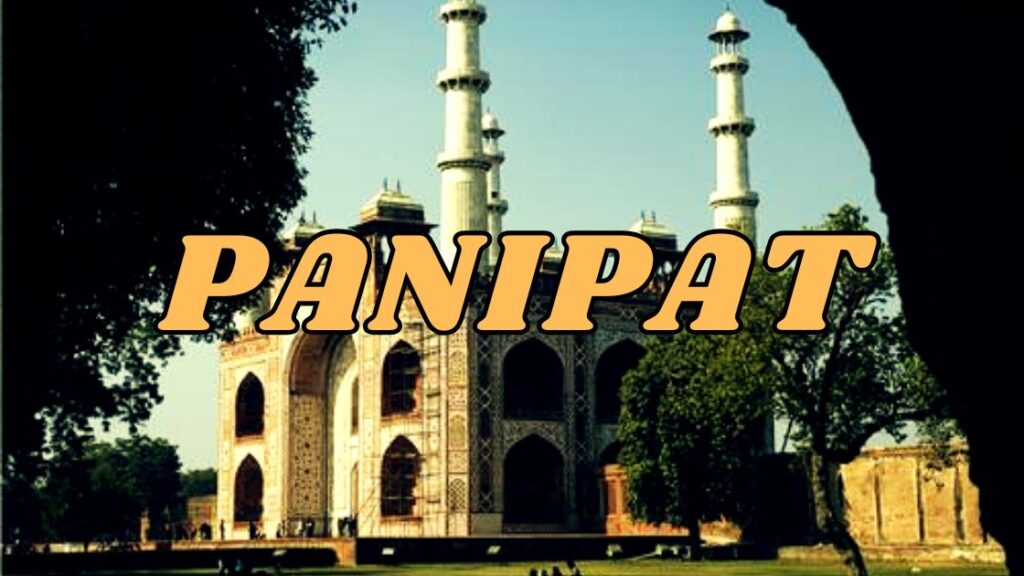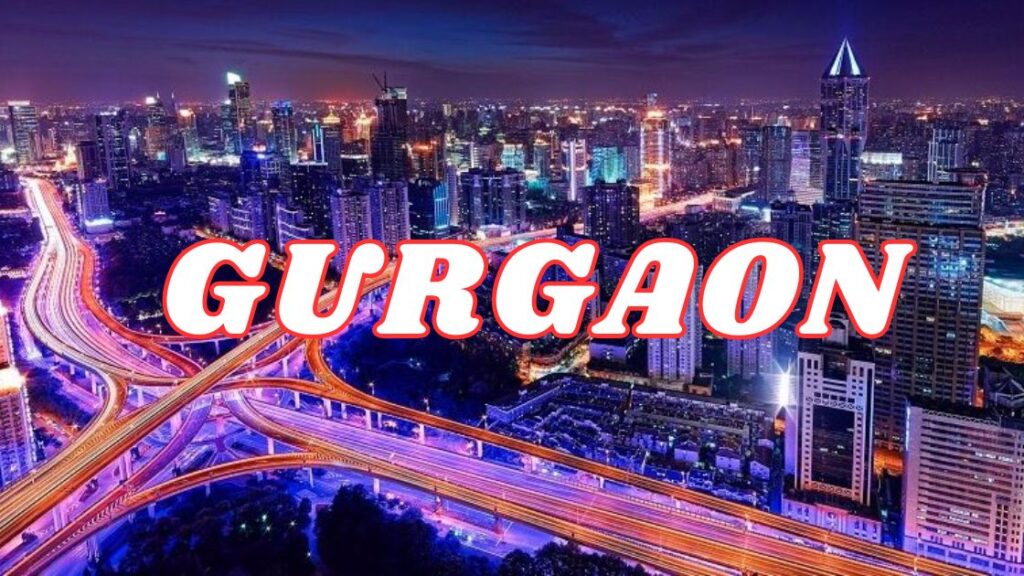The Capital City of Chhattisgarh
Raipur pronounced Raipur is the vibrant capital city of the Indian state of Chhattisgarh. It serves as the administrative headquarters for both this district and the Raipur division, making it a pivotal region in Central India. Once a part of Madhya Pradesh, Raipur gained prominence after the formation of Chhattisgarh on November 1, 2000. Today, it stands as the largest city in the state and a significant commercial hub for trade and industry.
Raipur: Chhattisgarh’s Thriving Capital, Cleanliness Leader
Raipur is celebrated for its cleanliness and efficient governance. The city was ranked as India’s 6th cleanest city in the Swachh Survekshan 2021 and remains an exemplary urban center in sanitation and sustainability. In 2023, Chhattisgarh was honored with the third rank in the ‘Best Performing States’ category in the Swachh Survekshan Awards.
In terms of livability, Raipur consistently excels:
- 7th in the Ease of Living Index 2022
- 7th in the Municipal Performance Index 2020
These rankings were awarded by the Ministry of Housing and Urban Affairs (Mohua), highlighting the city’s progressive governance and high quality of life.
Historical Overview of Raipur
The history of Raipur and its surrounding districts reflects a rich tapestry of dynasties, empires, and cultural transformations. Originally a part of the Chhattisgarh plain, this region was historically referred to as Dakshina Kosala, a significant territory under the Maurya Empire. Archaeological records and inscriptions offer glimpses into this historical prominence and evolution through centuries.
Gupta Period and Early Settlements
By the 6th century CE, Raipur and its neighboring regions came under the influence of the Gupta Empire, as evidenced by inscriptions discovered in Arang, near modern-day Raipur. This period marked a consolidation of political authority and cultural flourishing, laying the groundwork for future dynasties in Dakshina Kosala.
During the 7th century, Chinese traveler Xuanzang described the region, indicating its rule by a Buddhist kingdom centered in Bhandak, located in present-day Maharashtra. A branch of this ruling family eventually migrated to Sirpur (in modern Mahasamund district) and expanded their influence throughout Dakshina Kosala.

The Sirpur era, particularly under Tivaradeva, marked a golden age for the region. Tivaradeva’s contributions, especially the inscriptions in Sirpur’s temples, signify the kingdom’s prosperity and architectural excellence. However, the dynasty’s dominance waned as the Sharabhapuriya dynasty rose to power, establishing their authority over much of Chhattisgarh for several centuries.
The Kalachuri Dynasty and the Formation of Chhattisgarh
By the early 9th century, the Kalachuris emerged as the ruling dynasty of the region, asserting their dominance over Dakshina Kosala. The Kalachuris of Ratnapura, based in modern-day Chhattisgarh, governed the area until the 13th century. Their successors, the Kalachuris of Raipur, carried forward this legacy and played a pivotal role in shaping the historical identity of Raipur.

A significant event under the Kalachuris of Raipur was the conquest of 18 forts (garh) by a prominent ruler, giving rise to the etymology of Chhattisgarh, meaning “36 forts.” This period was marked by military expansion and consolidation, allowing the Raipur branch of the Kalachuris to establish themselves as influential regional powers.
Decline of the Kalachuris and Later Developments
By the 18th century, the Kalachuris transitioned into becoming the overlords of the entire Chhattisgarh region. However, their control gradually declined with the arrival of external powers and internal conflicts. Despite these changes, the historical legacy of Raipur as a center of culture and governance endured, influencing its identity as the administrative and cultural nucleus of modern Chhattisgarh.
Demographics of Raipur
Raipur, the capital city of Chhattisgarh, has witnessed remarkable growth in population and urban development over the past century. Its demographic composition reflects a diverse and vibrant community, with significant improvements in literacy, population size, and gender ratio.
Population Growth Through History
The historical population data highlights the consistent growth of Raipur over the decades:
- 1901: The population was 32,114.
- 1941: Saw a significant rise to 63,465, marking a 39.8% increase.
- 1951-1971: Rapid expansion brought the population to 205,986 in 1971.
- 1981: Witnessed a steep growth of 64.2%, reaching 338,245.
- 2011: The population reached a significant milestone of 1,010,433, with a decadal growth rate of 42.8%.
Population as of 2011 Census
- Total Population (Municipal Corporation): 1,010,433
- Males: 519,286
- Females: 490,801
- Sex Ratio: 945 females per 1,000 males (higher than India’s national average of 940).
- Children (0–6 years):
- Boys: 64,522
- Girls: 59,949
- Sex Ratio (Children): 929 girls per 1,000 boys.
Urban Agglomeration Statistics (2011 Census)
The urban agglomeration encompassing Raipur includes a broader area and population:
- Total Population: 1,122,555
- Males: 578,339
- Females: 544,216
- Sex Ratio (UA): 941 females per 1,000 males.
- Children (0–6 years): 142,826 in total.
Literacy Rates
Raipur demonstrates an impressive literacy rate, significantly exceeding national averages:
- Overall Literacy: 86.90%
- Male Literacy: 92.39%
- Female Literacy: 81.10%
- Urban agglomeration literacy stands at 86.45%, with 846,952 literates.
Geography and Climate of Raipur
Raipur, the capital city of Chhattisgarh, is characterized by its diverse geographical features and a distinct tropical climate. The city is centrally located and holds significant importance as the economic and cultural hub of the state.
Geography
Raipur is often referred to as the “rice bowl of India” due to its extensive rice production. Its location in a large plain provides fertile soil for agriculture, especially for growing diverse varieties of rice. Below are the key geographical highlights:
- River and Forests:
- The Mahanadi River flows east of the city, playing a crucial role in irrigation and agriculture.
- Dense forests on the southern side of Raipur add to the region’s ecological richness.
- Hills and Plateaus:
- The Maikal Hills rise in the northwest, while the land merges into the Chota Nagpur Plateau to the north.
- To the south lies the Deccan Plateau, contributing to the varied topography of the region.

Climate
Raipur experiences a tropical wet and dry climate, with significant seasonal variations. The climate can be divided into three primary seasons:
- Summers (March to June):
- Summers in Raipur are extremely hot, with temperatures often exceeding 48°C (118°F).
- Dry winds are prevalent during these months, adding to the intensity of the heat.
- Monsoons (June to October):
- The city receives an average annual rainfall of approximately 1,300 mm (51 inches), with most of it occurring during the monsoon season.
- Rainfall is heaviest in July and August, with over 700 mm combined in these two months.
- Winters (November to January):
- Winters are mild, with temperatures ranging from 5°C (41°F) to 28°C (82°F).
- This season offers pleasant weather, making it ideal for tourism and outdoor activities.
Climate Extremes and Data
- The city recorded its highest-ever temperature of 47.9°C (118.2°F), while the lowest recorded was 3.9°C (39.0°F).
- The annual average temperature is approximately 27.1°C (80.7°F).
| Month | Avg Max (°C) | Avg Min (°C) | Rainfall (mm) | Rainy Days |
|---|---|---|---|---|
| January | 28.0 | 13.9 | 14.4 | 1.2 |
| June | 37.1 | 26.7 | 197.8 | 9.1 |
| August | 30.4 | 24.5 | 334.2 | 14.4 |
| December | 28.5 | 13.8 | 6.9 | 0.3 |
Air Quality and Environmental Efforts
Raipur has made significant strides in combating air pollution. In 2024, it was ranked as the eighth-best National Clean Air City in India (for cities with populations above 10 lakhs) as part of the Swachh Vayu Survekshan initiative. Efforts like improved waste management and awareness programs have contributed to this achievement.
Government and Politics of Raipur
Raipur, as the capital city of Chhattisgarh, is the political nerve center of the state. Its governance structure combines traditional civic administration with modern urban planning to cater to its growing population and infrastructure needs.
Civic Administration
The administration of Raipur is overseen by the Raipur Municipal Corporation (RMC), which governs under the provisions of the Chhattisgarh Municipalities Act, 1961. The city’s civic administration history dates back to 17 May 1867, when the British established the Raipur Municipal Committee. In 1973, it was upgraded to the Raipur Municipal Corporation.
Key administrative highlights:
- Municipal Area:
- RMC spans an area of 503.67 km² (194.47 sq mi).
- Urban Agglomeration:
- Raipur, Bhilai, and Durg together form the Raipur-Bhilai-Durg Tri-City Metro area, with a combined population of approximately 3.19 million (as per the 2011 Census).
- Functions:
- The corporation manages health centers, educational institutions, schools, civic infrastructure, and recreational facilities such as museums and parks.
- Infrastructure projects like roads and flyovers, sanitation, and periodic maintenance of public buildings are also among its priorities.
- Administrative Structure:
- The RMC is led by the Municipal Commissioner (Shri Saurabh Kumar, I.A.S.) and the mayor (Aijaz Dhebar from the INC).
- The RMC comprises 70 wards divided into 8 zones, with zonal committees overseen by chairpersons elected by ward councillors.
Master Plan
The Raipur Master Plan 2021 focuses on the city’s sustainable development. It emphasizes the importance of decongesting the urban core and enhancing the availability of green spaces and water bodies.
Key elements of the plan include:
- Development of dense housing in the outskirts.
- Introduction of high-rise commercial and industrial zones, especially along NH-6.
- A vision for planned urban expansion to support population growth and infrastructure demands.
Legislative Assembly and State Agencies
- Lok Sabha Representation:
- Raipur is a Lok Sabha constituency with its seat being unreserved.
- The current Member of Parliament (MP) is Sunil Kumar Soni from the BJP.
- Vidhan Sabha Seats:
- Raipur district has seven Vidhan Sabha constituencies, with three constituencies located in Raipur City, one in Raipur Rural, and three in the surrounding tehsils.
- State Governance:
- The district administration is headed by the Collector and District Magistrate (Gaurav Kumar Singh, IAS).
- The administration is further supported by deputy collectors, joint deputies, and the Urban Administration and Development, Chhattisgarh, which facilitates urban governance and planning.
Political Landscape
The political administration of Raipur is dominated by the BJP (Bharatiya Janata Party) and INC (Indian National Congress). The most recent municipal elections were held on 21 December 2019, reflecting a competitive political environment.
The estimated municipal budget for 2017-2018 was ₹2.61 billion, with revenue streams comprising:
- Tax income (property tax, entertainment tax, etc.).
- Fees and charges for civic services.
- Grants and donations from higher government authorities.
- Capital income from projects and developments.
Raipur: The Thriving Economic Hub of Chhattisgarh
Raipur, the bustling capital of Chhattisgarh, has emerged as a significant economic hub, boasting rapid industrial growth, abundant natural resources, and a diversified economy. As the administrative center of the state, it is not only home to government operations but also a thriving center for industry, services, and commerce. The city’s strategic location and resource richness have positioned it among the most industrially developed cities in India.
Industrial Growth and Manufacturing Powerhouse
Raipur is often recognized as a hub for manufacturing and industrial development, driven by its vast mineral resources. It holds the title of one of the largest steel and iron producers in the country, and its robust industrial infrastructure supports this dominance. The city boasts an impressive number of manufacturing facilities, including:
- Over 200 steel rolling mills and 6 major steel plants.
- Approximately 195 sponge iron plants.
- Around 500 agro-industries and 800 rice milling units, establishing Raipur as a critical player in agriculture-based industries.
- A prominent chemical manufacturing plant specializing in formalin production for nationwide distribution.
This wide industrial base ensures steady economic activity and employment, fostering sustainable economic growth in the region.
Major Players and Upcoming Projects
Raipur attracts investments from major industrial players across various sectors. Some of the key companies and developments shaping the city’s economy include:
- Dalmia Cement (Bharat), which is setting up an integrated cement manufacturing unit with a capacity of 2.5 million TPA.
- JSW Steel and Grasim Industries, both operating steel and cement plants, respectively.
- APL Apollo‘s joint venture with a Singaporean firm to establish a manufacturing facility in the city.
- The Jindal Group, with a major heavy machinery plant in Raipur, further boosting industrial growth.
- Sung Ha Telecom, a South Korean multinational company, planning a manufacturing unit in Naya Raipur.
Raipur’s appeal to both domestic and international investors reflect its business-friendly environment, bolstered by infrastructure improvements and government incentives.
Emerging IT and Technological Advances
In addition to traditional industries, Raipur is evolving as a cyber and information technology hub. The development of a Technology Park in Naya Raipur serves as a testament to the city’s ambition to integrate digital advancements into its economy. The initiative supports IT startups and attracts technology-driven businesses, diversifying the city’s economic profile.
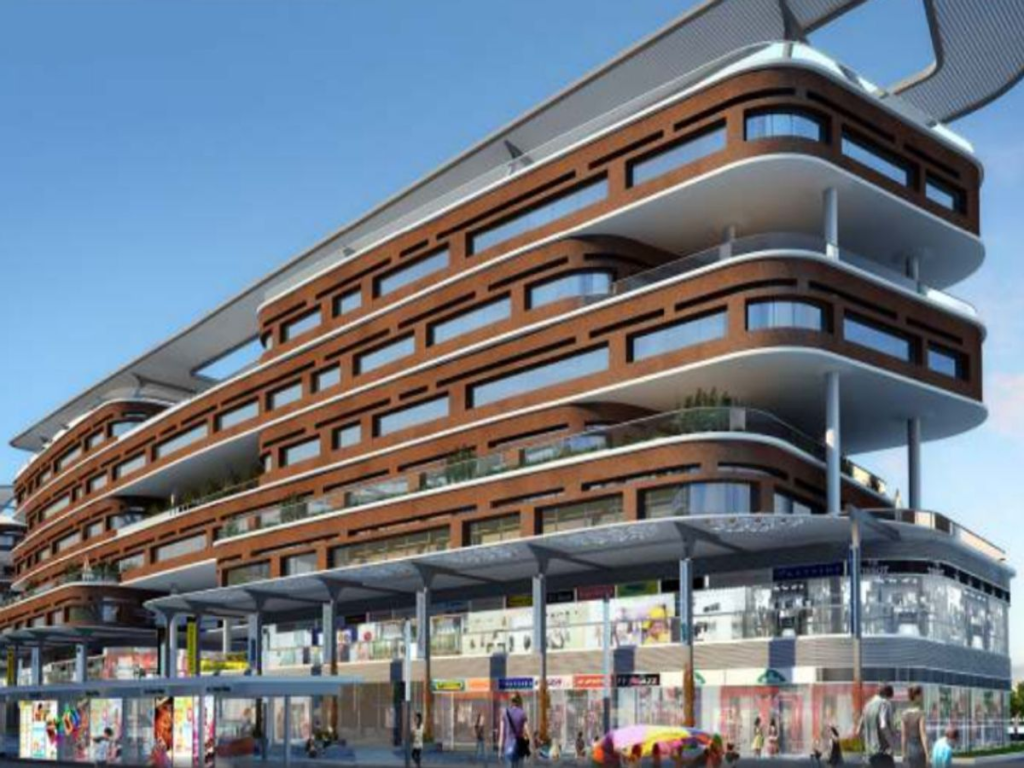
The Chhattisgarh State Industrial Development Corporation (CSIDC) is at the forefront of promoting small and medium enterprises (SMEs) in the region. It is developing a new industrial zone in Tilda, which will serve as an incubator for innovation in various industries, including metalwork and apparel.
Infrastructure Supporting Economic Growth
Raipur’s modern infrastructure facilitates seamless trade and transport, ensuring smooth operations for its industries. The city is well-connected via highways, railways, and air routes, making it a key transit point for goods.
The focus on greenfield development, particularly in Naya Raipur, includes state-of-the-art industrial parks and dedicated zones for specific industries, such as metal and apparel manufacturing. This targeted approach enhances productivity and strengthens Raipur’s position as an industrial epicenter.
Future Outlook and Expansion
The outlook for Raipur’s economy is remarkably positive, with new projects and expansions on the horizon. Key sectors, such as cement, steel, IT, and agro-industries, are projected to witness sustained growth. Initiatives like Godavari E-Mobility’s planned manufacturing plant reflect this gradual shift towards emerging industries, including sustainable energy and green technology.
The city’s pro-business policies, robust infrastructure, and a pool of skilled labor ensure that Raipur remains an attractive destination for investors and entrepreneurs alike. As the state continues to prioritize economic diversification and development, this is set to maintain its position as an industrial and economic powerhouse in India.
Civic Utilities of Raipur
Raipur, as the capital city of Chhattisgarh, has developed a framework for essential civic utilities to ensure the seamless functioning of its urban infrastructure. From water supply to waste management and transport, the city is making steady progress in improving the quality of life for its residents.
Transport Services
Raipur’s transportation network is overseen by the Public Works Department (PWD), which is led by a superintendent of engineers, along with executive engineers and a dedicated team of professionals. Their responsibilities include:
- Planning and designing roads and stormwater drain.
- Resurfacing roads, repairing potholes, and ensuring the upkeep of streets.
- Maintaining gardens and parks, which form an integral part of the city’s landscape.
For public transport, Raipur City Bus Service operates a total of 157 buses within the city, catering to the daily commute needs of thousands of residents. The government has been working to enhance the city’s public transportation system further by exploring additional eco-friendly options.
Electricity and Fire Services
The Chhattisgarh State Power Distribution Company Limited is responsible for Raipur’s electricity supply, ensuring uninterrupted power to households, industries, and businesses. Fire and emergency services in the city, established in 2016, play a critical role in responding to incidents and mitigating disasters. These services fall under the guidance of the urban local bodies and have significantly contributed to improving city safety measures.
Water Supply, Drainage, and Sewerage Systems
The water requirements of Raipur are primarily met through two sources:
- The Kharun River, which serves as the city’s primary water source, contributing around 27 million litres per day (MLD).
- Groundwater, adding 22 MLD to the supply.
With a daily water treatment capacity of 275 MLD, about 170 MLD of treated water is distributed to households and businesses, ensuring that Raipur meets the national standard of 135 liters per capita per day.
The city has a total of 50,000 water connections, supported by 1,133 functional handpumps. However, the sewerage infrastructure remains underdeveloped. While 1,44,882 households have septic tanks, approximately 5,649 households lack any outlets for toilets. The absence of a dedicated sewer network in the city adds to the challenges of urban sanitation, despite having a separate stormwater drainage system in place.
Solid Waste Management
Raipur has made strides in solid waste management by implementing a door-to-door waste collection system, covering over 3,56,490 households. The city’s waste segregation efforts ensure that biodegradable and non-biodegradable materials are handled efficiently.
The waste is processed at the Sarona disposal site, located 12 kilometers from the city center. The health department, along with zonal health officers and sanitary supervisors, manages these operations, aiming to establish more sustainable and eco-friendly waste disposal methods.
Challenges and Future Prospects
Raipur has demonstrated significant progress in improving civic utilities; however, challenges persist:
- The sewerage system remains a critical area of concern, requiring immediate attention to handle growing urban demands.
- Expanding public transportation options, such as metro and eco-friendly buses, is essential to reduce vehicular congestion.
- Waste management requires more advanced recycling and waste-to-energy initiatives for long-term sustainability.
Despite these hurdles, the city’s ongoing efforts to modernize its civic services indicate a promising future. The integration of smart city initiatives, along with improved public policies, aims to make Raipur a model for sustainable urban living in central India.
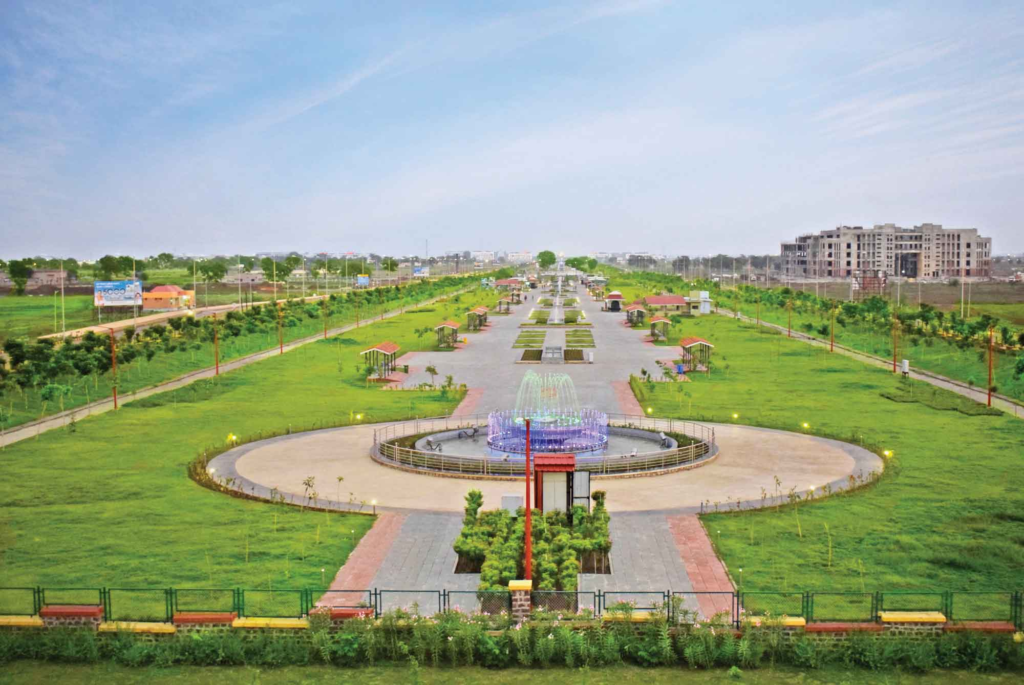
Transport in Raipur
Raipur, the capital city of Chhattisgarh, has evolved into a significant transportation hub due to its central location and well-developed infrastructure. The city offers road, rail, and air connectivity, making it an accessible destination for business and tourism alike.
Roadways
Raipur’s road network is pivotal for its connectivity within the state and beyond. Key roads in the city include National Highway 53 (NH-53), National Highway 30 (NH-30), the Great Eastern Road, and the newly constructed Atal Path Expressway, among others. The Raipur–Naya Raipur Expressway, also known as Atal Path Expressway, is a 12.7 km long access-controlled expressway designed to reduce congestion and offer swift connectivity.

Several upcoming expressway projects, like the Raipur-Ranchi-Dhanbad Expressway and the under-construction Raipur-Visakhapatnam Expressway, are expected to further enhance the city’s connectivity. These roads are key to supporting industrial and economic growth, linking Raipur to other important cities in India.
Bus Transport
Raipur’s inter-state bus terminal (ISBT), located at Ravanbhantha, has significantly improved the city’s public transport system. This terminal, managed by the Sri Balaji Swami Trust Sri Dudhadhari Math, replaced the old Pandri Stand, resolving the traffic problems caused by its central location. Launched in November 2021, the ISBT features modern amenities for travelers.
Additionally, the city operates a Bus Rapid Transit System (BRTS), facilitating smooth transit between Raipur and Naya Raipur, catering to growing urban demands.

Proposed Metro Rail System
To meet the future urban commuting needs, the Government of Chhattisgarh has proposed a light metro system, popularly called the Metro lite. This project will connect Naya Raipur to Bhila and Durg, covering a large part of the region’s urban expanse. This metro will alleviate congestion and encourage environmentally friendly travel, signifying Raipur’s modernization efforts.

Railways
The Raipur Junction Railway Station serves as the city’s primary railway hub, situated on the Howrah-Nagpur-Mumbai line. This A-1 category station connects Raipur to major cities such as Mumbai, Delhi, Kolkata, and Bhubaneswar, among others.

Raipur also has smaller stations like Sarona, Saraswati Nagar, and WRS Colony, which add to the city’s robust railway network. These stations support regional rail services, easing commuting for local populations.
Airways
The Swami Vivekananda International Airport, located about 15 kilometers south of Raipur, serves as the primary airport for Chhattisgarh. Known for its modern facilities, the airport connects Raipur to major cities like Mumbai, Delhi, Bangalore, Kolkata, and Goa. Airlines such as IndiGo, Vistara, and Alliance Air operate regular flights from this airport. It also serves as an important gateway to Naya Raipur and Jagdalpur, promoting regional connectivity and tourism.

Mayoral Governance
Raipur’s development has been influenced by a series of mayors representing different political parties. Notable names include Aijaz Dhebar (INC), who has been serving as the current mayor since January 2020. Previous administrations under leaders such as Pramod Dubey, Kiranmayi Nayak, and Sunil Kumar Soni have also played vital roles in shaping the city’s infrastructure and governance.
The legacy of mayors highlights Raipur’s political diversity, showcasing contributions from leaders of both the Indian National Congress (INC) and the Bharatiya Janata Party (BJP) over the years.
Future Prospects
Raipur is steadily evolving into a modern urban center. The integration of expressways, metro systems, and robust bus services ensures that commuting is becoming more efficient and accessible for residents and visitors alike. The development of transportation facilities underlines the city’s potential to become an economic hub for central India.
Incorporating future-ready solutions and embracing sustainability, Raipur is positioning itself as a well-connected, livable, and thriving capital city.
Points of Interest in Raipur
Raipur is a vibrant city known not only for its historical significance but also for its rich cultural heritage. Numerous temples, museums, lakes, and wildlife safaris are scattered across the city, making it a compelling destination for both tourists and locals alike. Below are some of the must-visit attractions in Raipur.
Mata Kaushalya Temple
Mata Kaushalya Temple holds a unique distinction as the only temple in the world dedicated to Mata Kaushalya, the mother of Lord Ram. Located in Raipur, the temple offers a peaceful atmosphere for devotees seeking blessings. It holds a special place in the hearts of locals and tourists visiting the city, making it an iconic spiritual site.
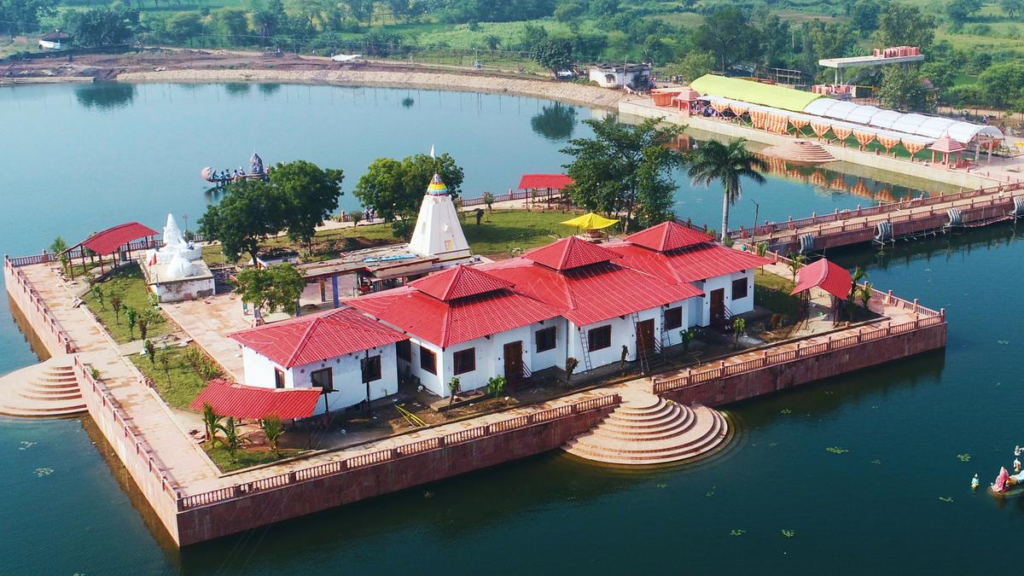
Purkhouti Muktangan
Situated in Naya Raipur, Purkhouti Muktangan is an open-air cultural garden that showcases the diverse culture of Chhattisgarh. Through exhibits and performances, the garden highlights the local traditions, crafts, and the ethnic diversity of the region. It is a great place to immerse yourself in the state’s cultural heritage.

Nandanvan Jungle Safari
Also located in Naya Raipur, Nandanvan Jungle Safari is recognized as Asia’s largest man-made jungle safari. The safari provides a unique experience for nature enthusiasts and wildlife lovers, allowing them to observe various species in an expansive environment. The safari aims to conserve local wildlife while offering an exciting educational experience to its visitors.

Shree Ram Temple
Located at VIP Square, the Shree Ram Temple is a revered religious site for Hindus in Raipur. This magnificent temple dedicated to Lord Ram attracts devotees from far and wide. The temple not only offers spiritual solace but is also known for its architectural beauty, making it a sight to behold.

Mahant Ghasidas Memorial Museum
Situated at Ghadi Chowk, the Mahant Ghasidas Memorial Museum preserves the history, culture, and traditions of Chhattisgarh. The museum houses a collection of artifacts, sculptures, and ancient art forms, offering an insightful peek into the region’s past and historical richness.

Swami Vivekananda Sarowar (Budha Talab)
Swami Vivekananda Sarowar, commonly known as Budha Talab, is an important landmark in Raipur. As a large water reservoir, this picturesque lake serves as a recreational and spiritual place for the public. It is a favorite spot for morning walks, picnics, and boating activities. With a statue of Swami Vivekananda placed on a small island in the lake, this place holds spiritual and cultural value for visitors.

Telibandha Lake (Marine Drive)
Telibandha Lake, often referred to as Marine Drive due to its stunning beauty, is one of the most popular leisure destinations in Raipur. The lake has been developed into a recreational park with a well-maintained promenade, walking tracks, and boating facilities. The surrounding greenery, combined with the lake, offers a refreshing getaway from the hustle and bustle of the city.

Education in Raipur
Raipur has emerged as a major educational hub of Chhattisgarh, hosting several institutes of national importance in various fields like engineering, management, medical studies, and law. Its diverse educational offerings cater to students from across the state and the nation. The city is home to premier institutes such as IIM Raipur, AIIMS Raipur, and NIT Raipur.
Premier Educational Institutes
Raipur hosts a variety of top-tier institutions, including:
- All India Institute of Medical Sciences (AIIMS)
- Indian Institute of Management Raipur (IIM)
- National Institute of Technology, Raipur (NIT)
- Hidayatullah National Law University
- International Institute of Information Technology, Naya Raipur
- Central Institute of Petrochemicals Engineering and Technology
These institutions are contributing significantly to shaping the future of students in fields ranging from technology and medicine to business management and law.


Government Universities
Several prestigious state-run universities in Raipur add to its educational credibility. These include:
- Pandit Ravishankar Shukla University
- Chhattisgarh Swami Vivekanand Technical University
- Chhattisgarh Kamdhenu Vishwavidyalaya (Veterinary Sciences and Animal Husbandry)
These institutions are providing specialized education to meet the demands of the state and beyond.

Private and Deemed Universities
Alongside government-run institutions, Raipur is home to well-regarded private universities, such as:
- Amity University
- ICFAI University
- MATS University
- Kalinga University
These universities offer diverse programs in engineering, business, and humanities, providing students with ample opportunities to pursue higher education.
Colleges for Professional Studies
The city houses multiple colleges specializing in professional courses, such as:
- Government Engineering College (GEC)
- Raipur Institute of Technology
- Shri Shankaracharya Institute of Professional Management and Technology (SSIPMT)
These colleges provide opportunities for engineering and management studies, helping students develop careers in specialized fields.
Secondary Education
Raipur’s educational system is robust at the secondary school level. Some well-known schools in the city include:
- DAV Public School
- Bharatiya Vidya Bhavan
- Rajkumar College, one of the oldest schools in the region, established in 1882 during the British Raj, has a legacy of academic excellence.
These institutions offer a blend of national curricula, preparing students for both academic and holistic growth.
Media in Raipur
Raipur, the capital of Chhattisgarh, is a significant media hub, with a variety of news channels, newspapers, and radio stations serving the city and surrounding areas. The media landscape is diverse, offering content in both Hindi and English.
News Channels
Raipur has a significant presence of local news channels that broadcast in Hindi, catering to the region’s primary language. These channels provide a mix of local, regional, and national news. Some prominent channels include:
- CG 24 News Channel (Hindi)
- IBC24 (Hindi)
- Khabar Bharti (Hindi)
- Grand News (Cable Network) (Hindi)
- News18 MP CG (Hindi)
- Sadhna News (Hindi)
- Sahara Samay Channel (Hindi)
- Zee MP CG (Hindi)
- India News MP CG (Hindi)
- Bansal News (Hindi)
- Abhi Tak (Cable Network) (Hindi)
- Inh News (Hindi)
These channels offer daily updates about politics, current affairs, entertainment, and local news of Chhattisgarh.
Newspapers
Raipur is home to a range of newspapers that serve both Hindi and English readers. Some major daily newspapers include:
- Dainik Bhaskar (Hindi)
- Dainik Vishwa Pariwar (Hindi)
- Patrika (Hindi)
- Nava Bharat (Hindi)
- Deshbandhu (Hindi)
- Nai Duniya (Hindi)
- Haribhoomi (Hindi)
- The Times of India (English)
- The Central Chronicle (English)
- Hindustan Times (English)
- Hindustan (Hindi)
- The Hitavada (English)
- The Pioneer (English)
- Business Standard (English, Hindi)
- Business Bhaskar (English, Hindi)
These newspapers cater to a wide audience, providing the latest information on politics, business, and regional and national issues.
Radio Stations
Raipur has several FM radio stations, offering a variety of music, news, and entertainment. Some popular radio stations in the city include:
- 94.3 FM MY FM – Slogan: Jio Dil Se
- 95.0 FM FM Tadka – Slogan: Sound’s Good
- 98.3 FM Radio Mirchi – Slogan: Mirchi Sunane Wale Always Khush
- 101.6 FM All India Radio Raipur & Vividh Bharti – Slogan: Desh Ki Surili Dhadkan
- 104.8 FM Radio Rangila – Slogan: Jamm ke suno
These radio channels broadcast a wide range of music genres, as well as news programs and live shows that entertain the local population.
Notable People from Raipur
Raipur has been home to several notable personalities who have made significant contributions in various fields like politics, entertainment, sports, and culture. Here are some well-known individuals associated with the city:
- Lucky Ali – Renowned Bollywood singer/composer/actor, who did part of his schooling at Rajkumar College.
- Teejan Bai – Traditional performing artist known for Pandavani, a style of storytelling through music.
- Anurag Basu – Bollywood director, born in Raipur and later moved to Bhilai.
- Harinath De – Indian historian and polyglot, the first librarian of the National Library of India.
- Mohammad Hidayatullah – Former Chief Justice of India and former acting President of India, educated at the Government High School of Raipur.
- Akhtar Husain – Pakistani scholar and journalist, spent time in Raipur during his childhood.
- Harshad Mehta – Infamous stockbroker, spent his childhood in Raipur after his family moved from Mumbai.
- Rajneesh – Indian philosopher, spent time in Raipur and taught philosophy at Raipur Sanskrit College.
- Shekhar Sen – Renowned musical mono-act player, born and raised in Raipur.
- Ravishankar Shukla – First Chief Minister of the state of Madhya Pradesh, spent his early years in Raipur.
- Vidya Charan Shukla – Former Union Minister, born in Raipur, and a nine-term parliamentarian.
- Veer Narayan Singh – Freedom fighter who was jailed in Raipur by the British Army.
- K. S. Sudarshan – Former chief of the Rashtriya Swayamsevak Sangh, born in Raipur in 1931.
- Habib Tanvir – Noted theatre artist and playwright, born in Raipur in 1923.
- Swami Vivekananda – The famous spiritual leader spent two formative years in Raipur from 1877 to 1879.
These individuals have significantly contributed to various domains, making Raipur a city rich in cultural heritage and intellectual influence.
Raipur’s media landscape is expansive, and the city’s notable people further contribute to its reputation in the fields of education, culture, and politics. The media, coupled with these significant personalities, continues to shape Raipur’s development as a key cultural and intellectual hub of Chhattisgarh.

